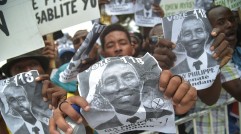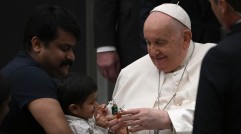Math Equation to Debunk Conspiracy Theories? Physicist Formulates How Large-Scale Conspiracies Could Be Exposed
Have you ever wondered how large-scale conspiracies can be exposed? Well, wonder no more as an Oxford University post-doctoral physicist has formulated a scientific equation on how to keep and unravel conspiracy theories.
According to a study published in the journal Plos One, Dr. David Robert Grimes explained the viability of conspiratorial beliefs. Due to Grimes' profile as a physicist working in a cancer research as well as a science writer and broadcaster, he often receives many communications regarding science-related conspiracies, Phys.org noted.
Those messages prompted him to delve deeper into the actual credibility of the large-scale collusions. In his study, Grimes suggested that large groups of people sharing in a conspiracy will very rapidly give themselves away.
"It is common to dismiss conspiracy theories and their proponents out of hand but I wanted to take the opposite approach, to see how these conspiracies might be possible," Grimes explained. "To do that, I looked at the vital requirement for a viable conspiracy -- secrecy."
Grimes' equation to express this theory relied on three factors including the number of conspirators involved, the amount of time that has passed and the intrinsic probability of a conspiracy failing.
The Oxford University physicist then applied his equation to four well-known conspiracy theories such as the belief that the Moon landing was faked, the belief that climate change is a fraud, the belief that vaccines cause autism and the belief that pharmaceutical companies have suppressed a cure for cancer, BBC News reported.
So, how did Dr. Grimes formulate his equation?
Grimes started with the common statistical tool called Poisson distribution, which is used to measure the probability of a particular event to occur over a certain period of time.
"The mathematical methods used in this paper were broadly similar to the mathematics I have used before in my academic research on radiation physics," Grimes said.
Using a trickle of assumptions, combined with mathematical deduction, Grimes created a general but incomplete formula. Since he was missing a good estimate for the intrinsic probability of a conspiracy failing, he analyzed data from three genuine collusions.
Using Grimes's analysis, the truth about the Moon landings being a hoax would have been debunked in three years and eight months. While a climate change fraud would have been exposed in three years nine months, Daily Mail reported.
The vaccination conspiracy, on the other hand, would take three years and two months to be uncovered. And a suppressed cancer cure would have been unraveled in three years and three months.
In his study, Grimes also estimated the maximum number of people needed to be involved on each "secret." Based on his calculations, 411,000 people were needed to be involved in the Moon landings hoax.
In addition, 405,000 people would know about the climate change fraud while 22,000 people would be covering up that vaccinations are unsafe. And 736,000 people would know about a cancer cure being suppressed.
"While I think it's difficult to impossible to sway those with a conviction," Grimes said. "I would hope this paper is useful to those more in the middle ground who might wonder whether scientists could perpetuate a hoax or not."
Subscribe to Latin Post!
Sign up for our free newsletter for the Latest coverage!
* This is a contributed article and this content does not necessarily represent the views of latinpost.com














